I have had this camera for 7 years, which is longer than I’ve had any other film camera, partly because it’s great, and partly because it still works. bought it with the Voigtlander 25mm Snapshot Skopar, and later on added the 35m Color Skopar. The design of the Bessa L is odd in that there’s no focussing device, no rangefinder or TTL view, so you have to guess the distance and use a separate viewfinder for each lens. For the 25mm I bought the Voigtlander finder, which was quite expensive, but the 35mm lens is paired with a Helios finder that cost a lot less and was easily available to buy. The Voiglander one has better build quality but the Helios is also good for the price, with framing brightlines and a clear overall view.
It’s all refreshingly basic and manual. It has a battery-powered light meter but you have to set the shutter speed, aperture and focus. The lenses are ltm mount with no pins and they simply screw on. The camera and lenses are much smaller than an SLR setup, so it doesn’t take up too much space in my backpack which is required for water, various clothing layers and the all important lunch-related foodstuffs and other snacks.
I chose XP2 for my walk in the Dark Peak, in Derbyshire, England. I like XP2 because it’s a fast film but with fine grain, and it’s so easy to get processed because
you can throw it in with your colour films. I’ve heard people say XP2 is ‘a bit grey’ but I find it gives good contrast, sharpness and tonality. I asked the lab to not adjust the contrast of the images, as I generally prefer a naturalistic look and there was going to be a lot of contrast in the images already.
It was a hot sunny day with a just few small fluffy clouds. This kind of harsh light is not favourable for colour images but I feel black and white captures the ambience well without the distraction of the washed-out colours.
These images were all captured around Grinah Stones and Bleaklow Stones; an area of moorland with squelchy peat bogs and characterful gritstone tors, a place I love to go for long walks in, and where even at weekends it can be mostly just you and the landscape.
The sunlight brings out face-like patterns in the pockmarked rocks of Grinah Stones.
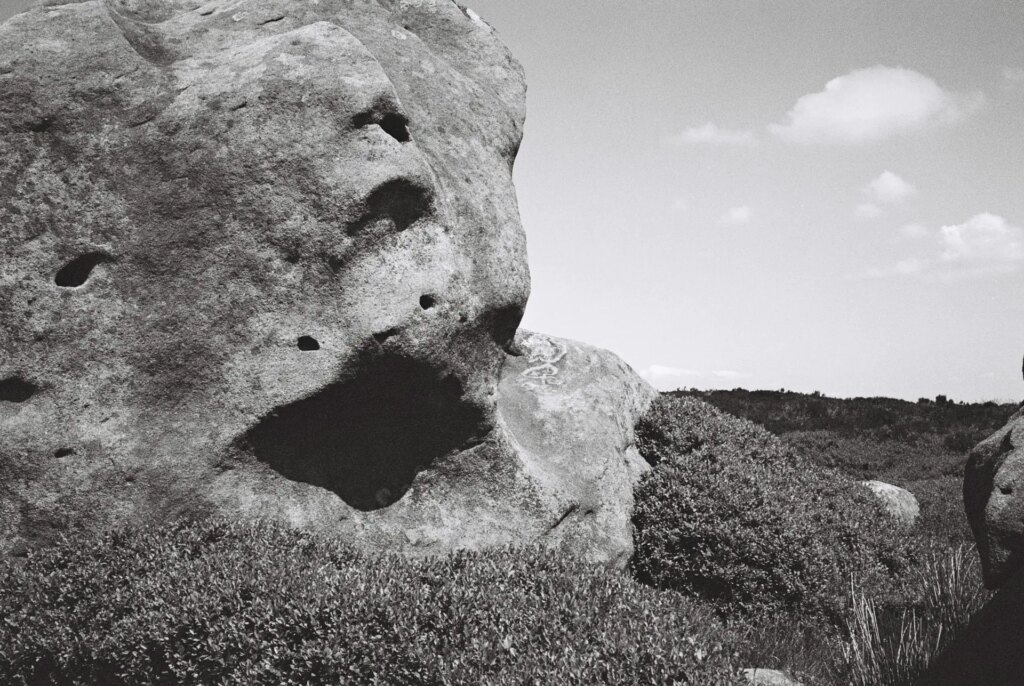
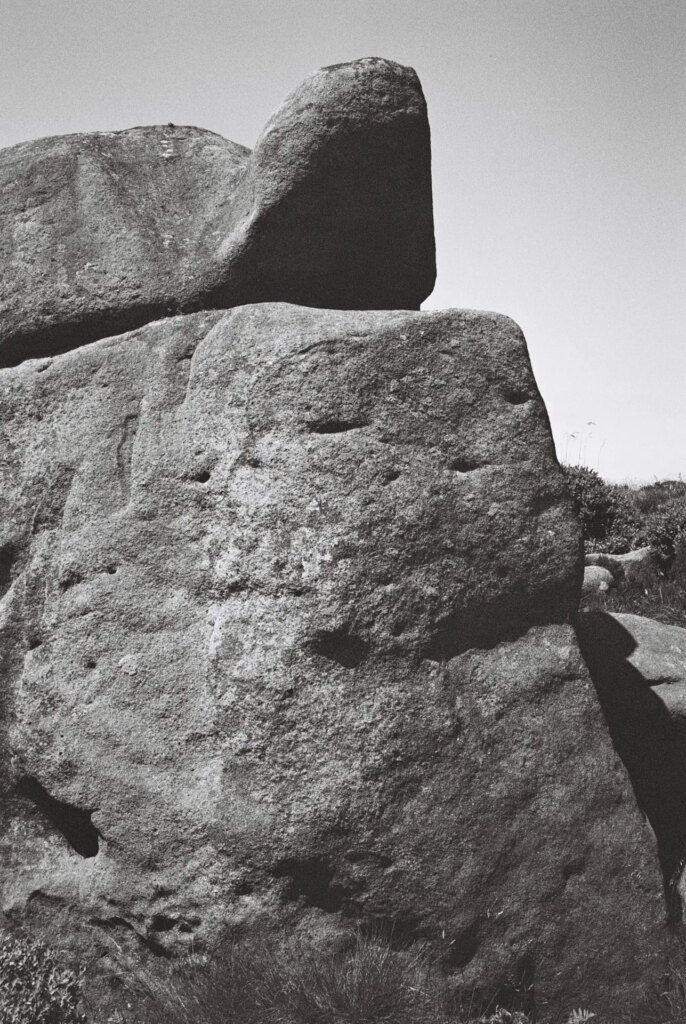
This weathered rock is at Bleaklow Stones, and is nicknamed The Anvil. Although it looks more like its nickname from a different angle, I wanted to use the big shadow to create some contrast in the image.
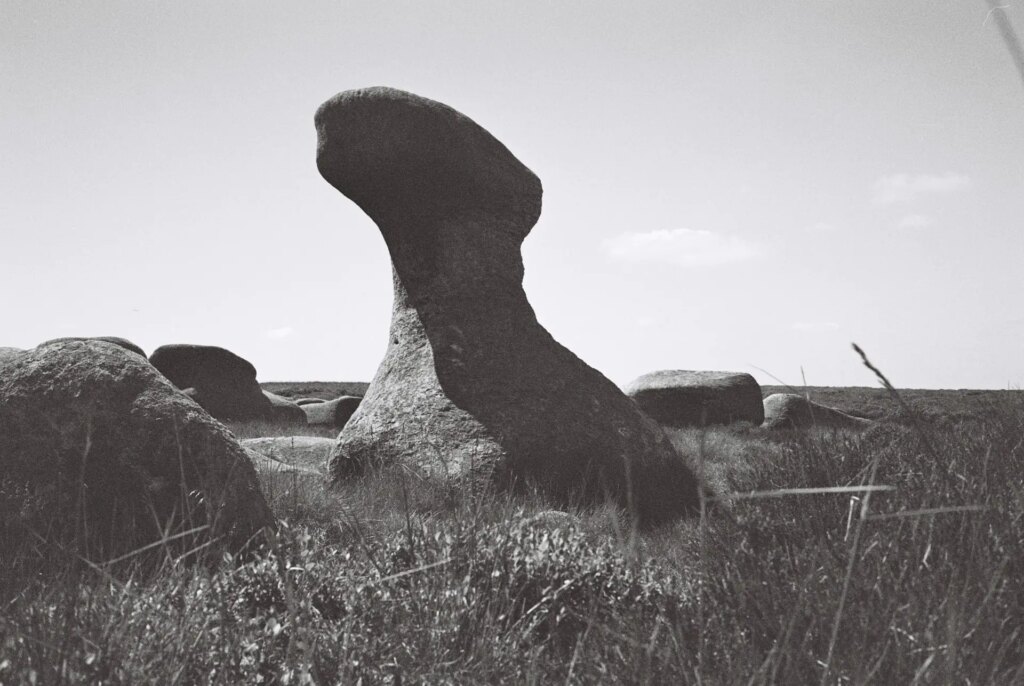
It was summertime and it had not rained for a long time so peat bogs were quite dry. This one had grasses and bilberry growing on top. The rolling hills of Bleaklow are in the distance.
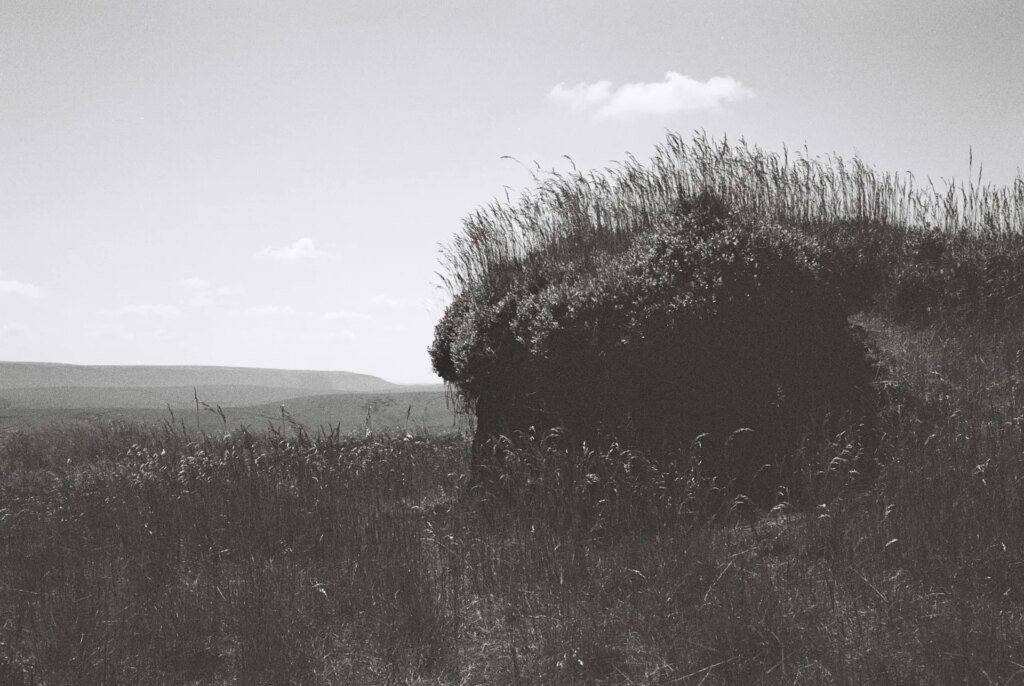
These paths on the moors are usually boggy in the wetter seasons, and will swallow your boots if you’re not careful! Not today though; it was dry and crispy with cracks like crazy paving.
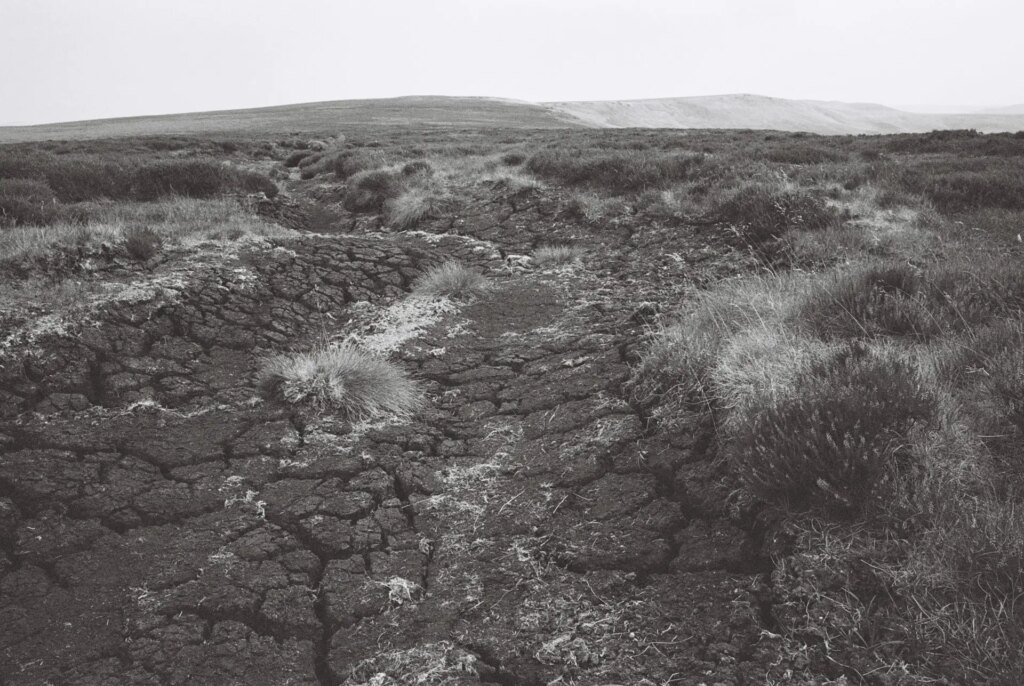
I would heartily recommend the Voigtlander Bessa L to anyone who wants a good quality camera and lenses, that isn’t too heavy. It’s a bit quirky and you need to be able to judge distances but if you stick with wide-angle lenses it isn’t critical to get it spot-on.
Thanks for reading my first post! You can find some more of my photos here: My Flickr photos
Share this post:
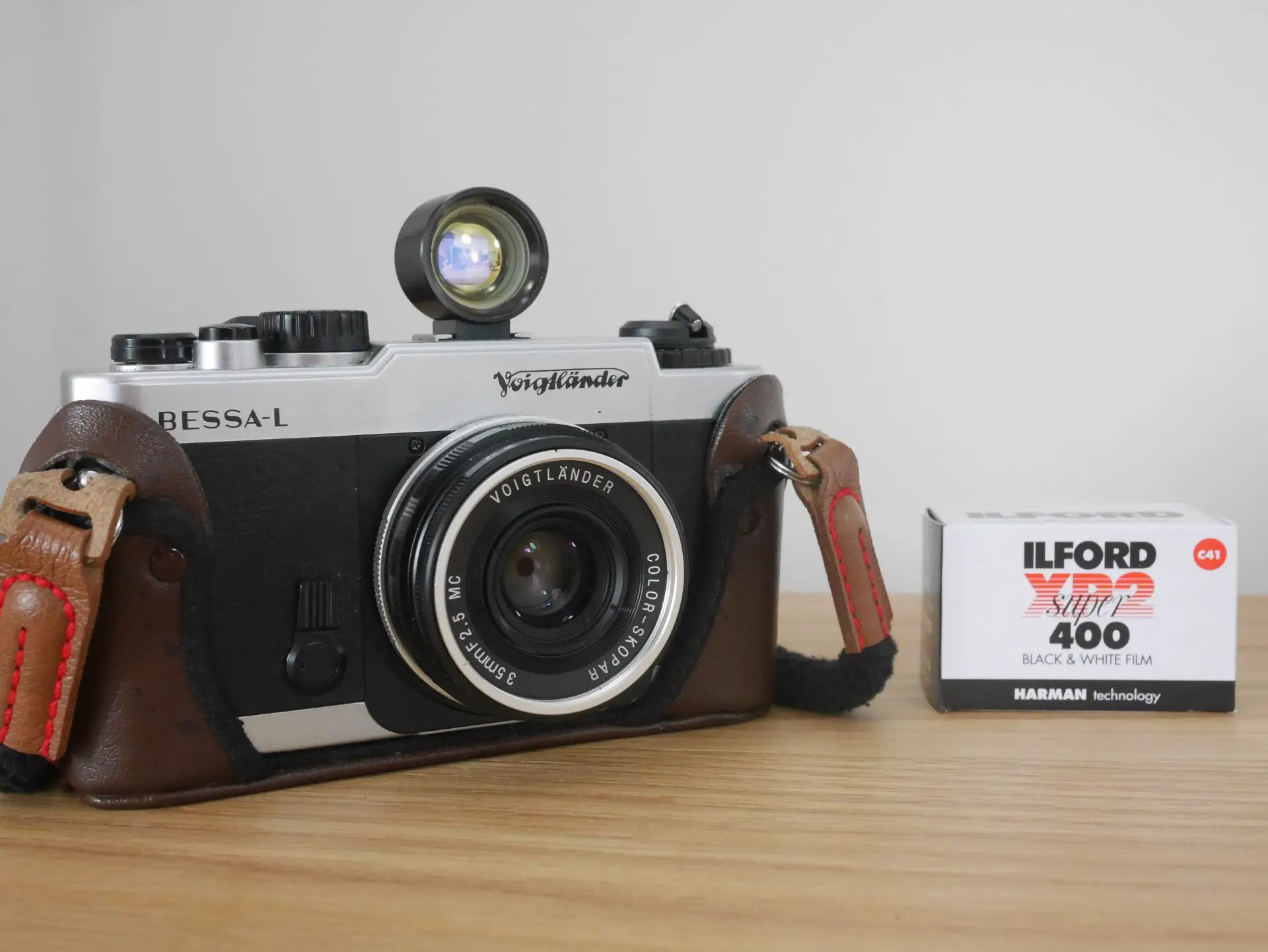
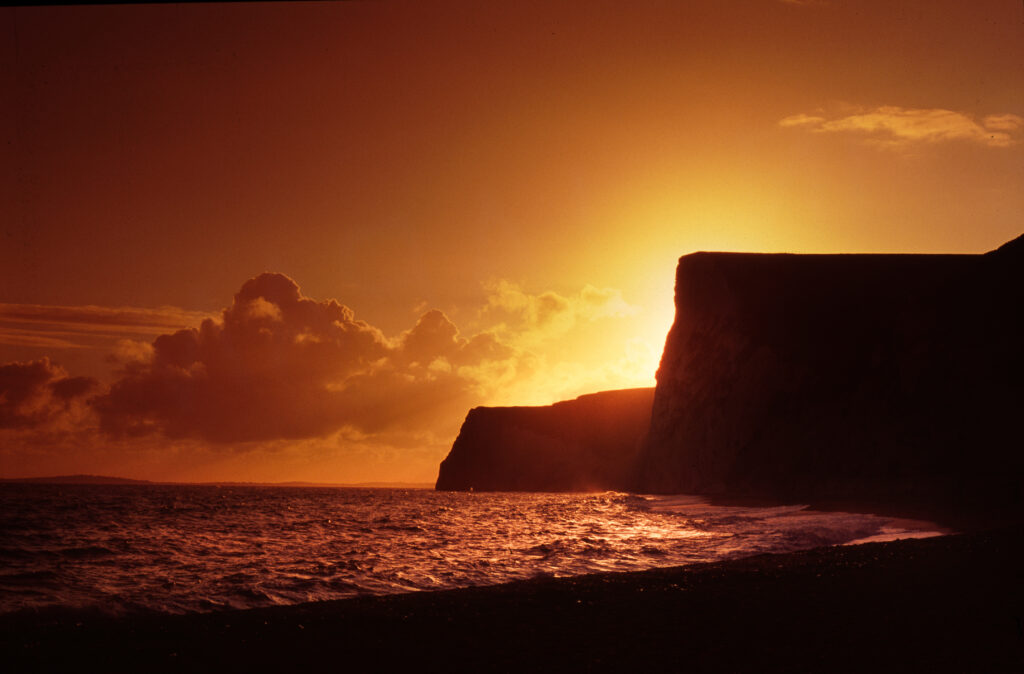
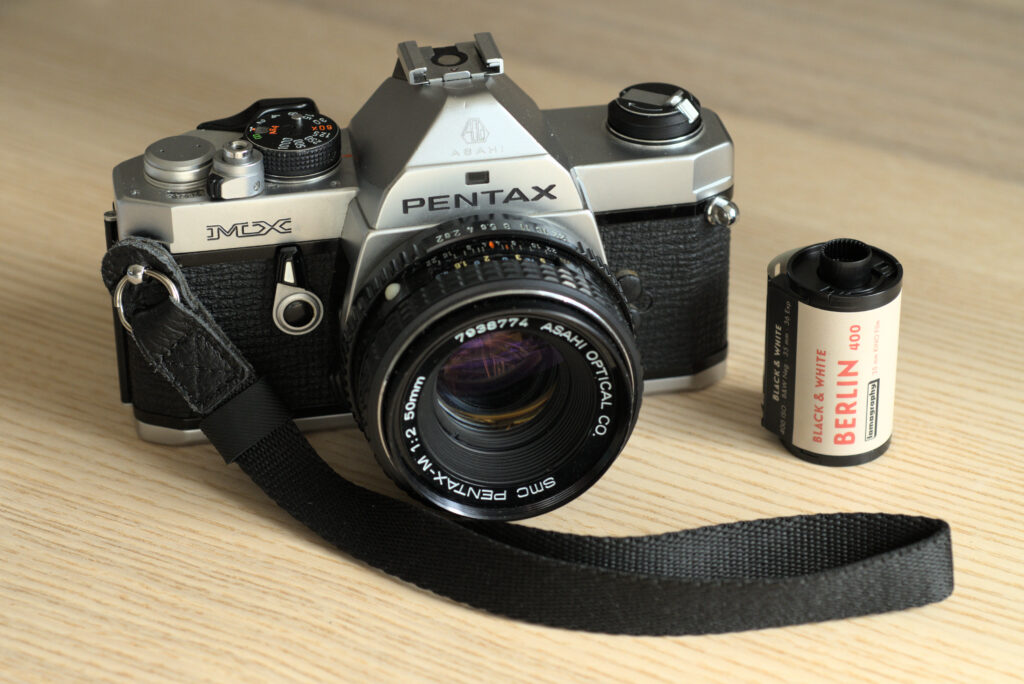
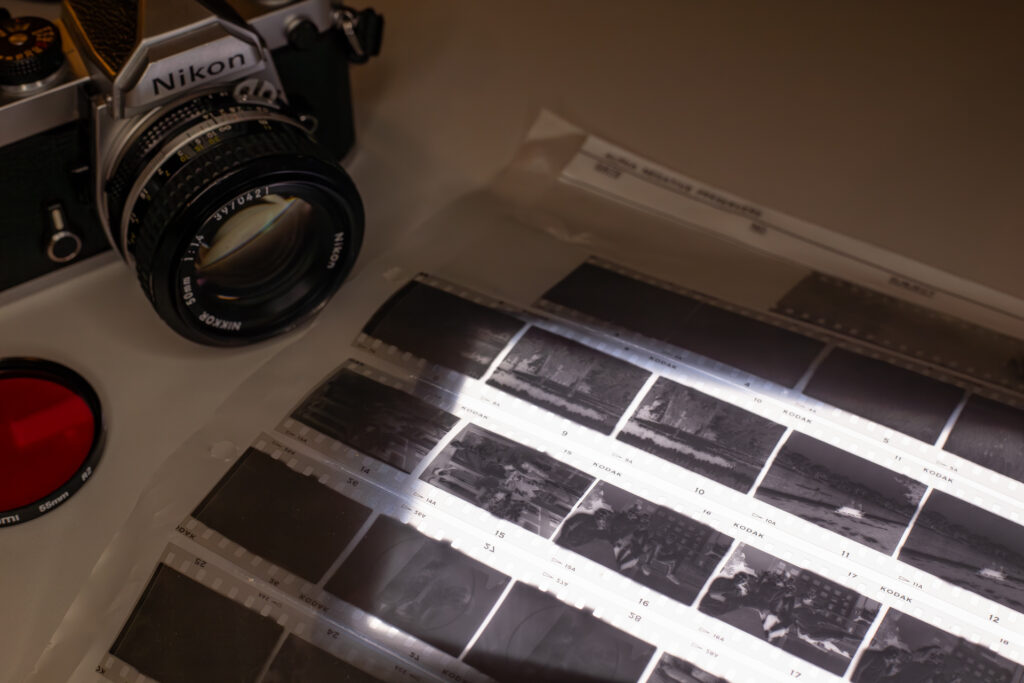
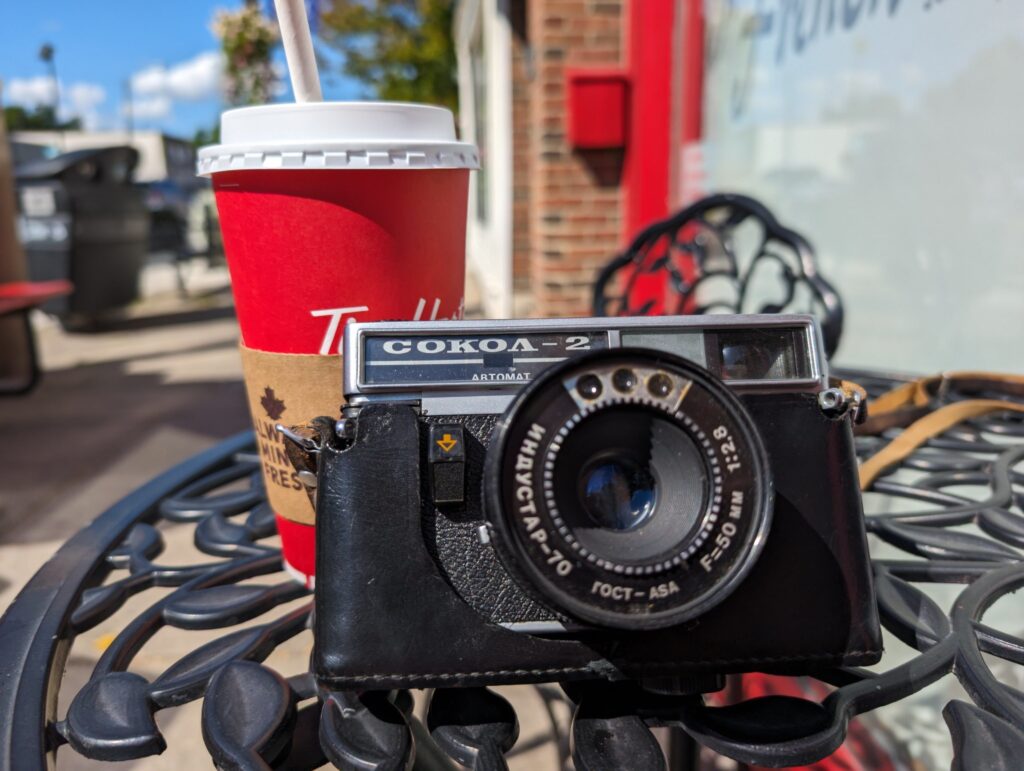




Comments
Martin on 5 frames with Voigtlander Bessa L and Ilford XP2
Comment posted: 27/07/2023
I have a Bessa L und it's maiden name Cosina SW-107. It's a camera that is definitely for the wider lenses but it's a fine user and combines "modern" features with the feeling of using the Ur-Leica (people might stone me for this) and it's a light set-up, IMO.
Best wishes
Martin in Austria
Comment posted: 27/07/2023
Floyd Takeuchi on 5 frames with Voigtlander Bessa L and Ilford XP2
Comment posted: 27/07/2023
Comment posted: 27/07/2023
Klaus Wirz on 5 frames with Voigtlander Bessa L and Ilford XP2
Comment posted: 27/07/2023
I use a similar set for my walkings-a Leica Standard with out a meter, albeit with a very tiny finder with a 50mm window, no frame lines. I pair that with a 25mm Voigtländer Snap-Shot Skopar ( which I can highly recommend too) and an old battered plastic Leica Canada 24mm finder. My favorite combo. The Leica Standards are not that expensive, but you better factor in a overhaul of the gears, the youngest Standards are from 1939...
A nice half case you found for the Bessa-where did you get that ?
cheers, Klaus
Comment posted: 27/07/2023
Paul Quellin on 5 frames with Voigtlander Bessa L and Ilford XP2
Comment posted: 27/07/2023
Comment posted: 27/07/2023
Richard Moore on 5 frames with Voigtlander Bessa L and Ilford XP2
Comment posted: 27/07/2023
I've seen others mention this and it being an uneconomic repair (if it can be repaired) which is a real shame. Can't quite bring myself to chuck it out cos it looks like new. I live in hope that someone knows of a fix so do tell......
Comment posted: 27/07/2023
Daniel Castelli on 5 frames with Voigtlander Bessa L and Ilford XP2
Comment posted: 27/07/2023
Comment posted: 27/07/2023
Justin on 5 frames with Voigtlander Bessa L and Ilford XP2
Comment posted: 27/07/2023
Unfortunately it has not aged well, even though it does still function. The rubber is peeling off and sticky, the small metal exposure-button-lock nipple thing on the advance crank broke off (so the meter goes off in the bag all the time), the foam light seals are bad, etc. It just feels cheap and the metal thin, especially compared to the lenses that one pairs with it.
These are all the things that remind you of just how much better made vintage cameras were. However, I think Voigtlander/Cosina did go in a more refined direction after this model, although when I look at the prices that the similarly built R3 bodies are commanding now I cringe.
Comment posted: 27/07/2023
Toro on 5 frames with Voigtlander Bessa L and Ilford XP2
Comment posted: 28/07/2023
Comment posted: 28/07/2023